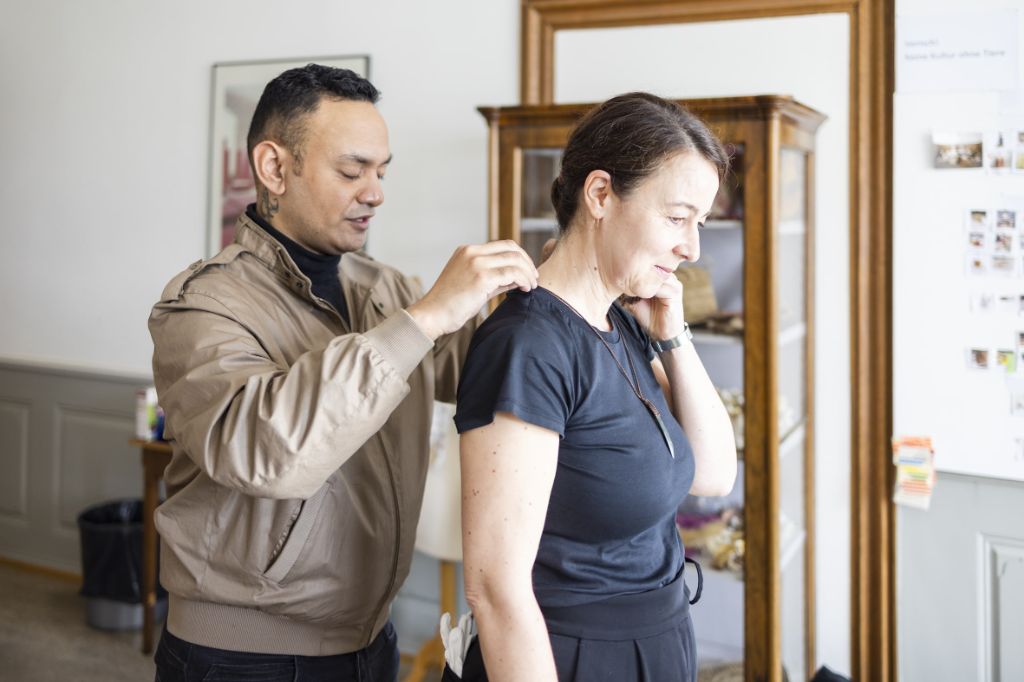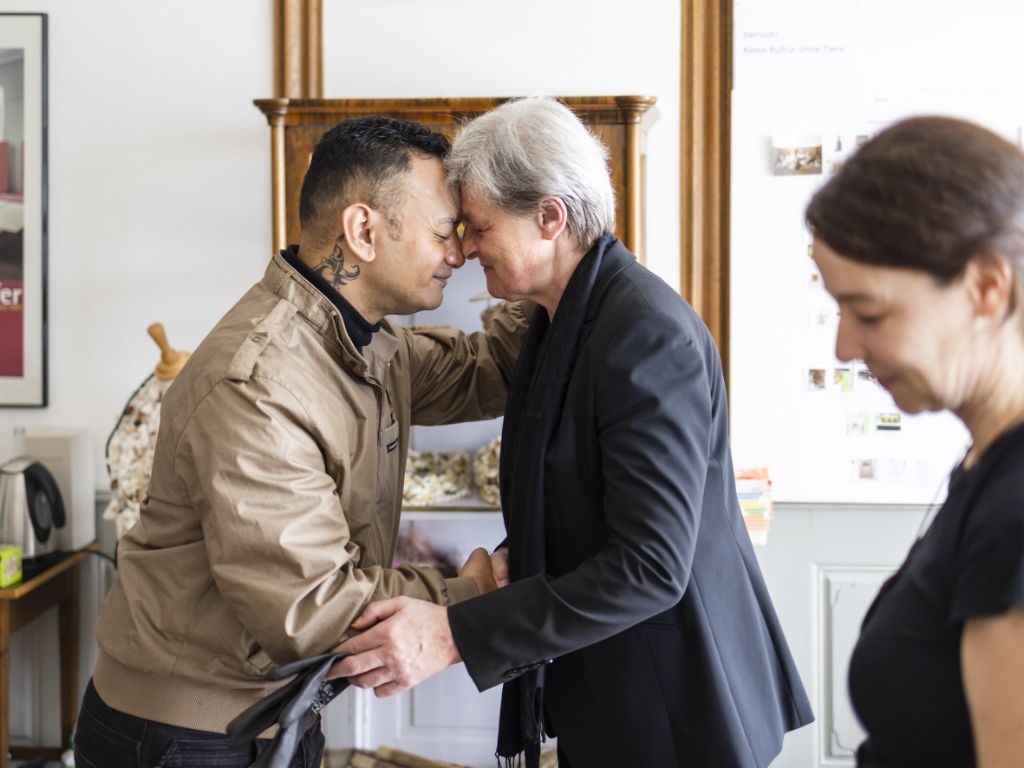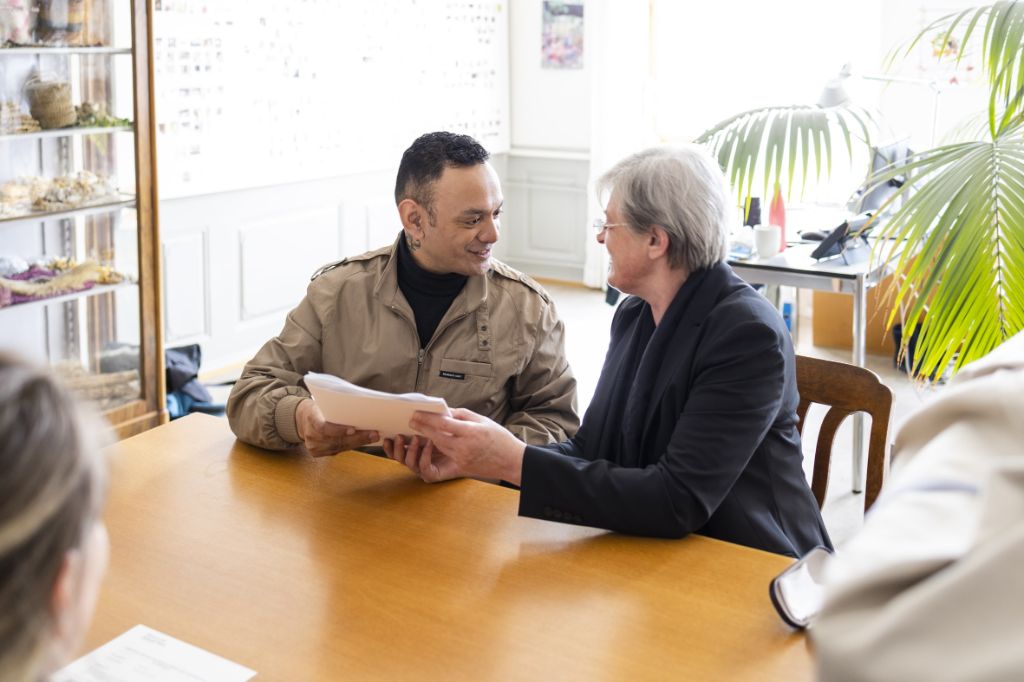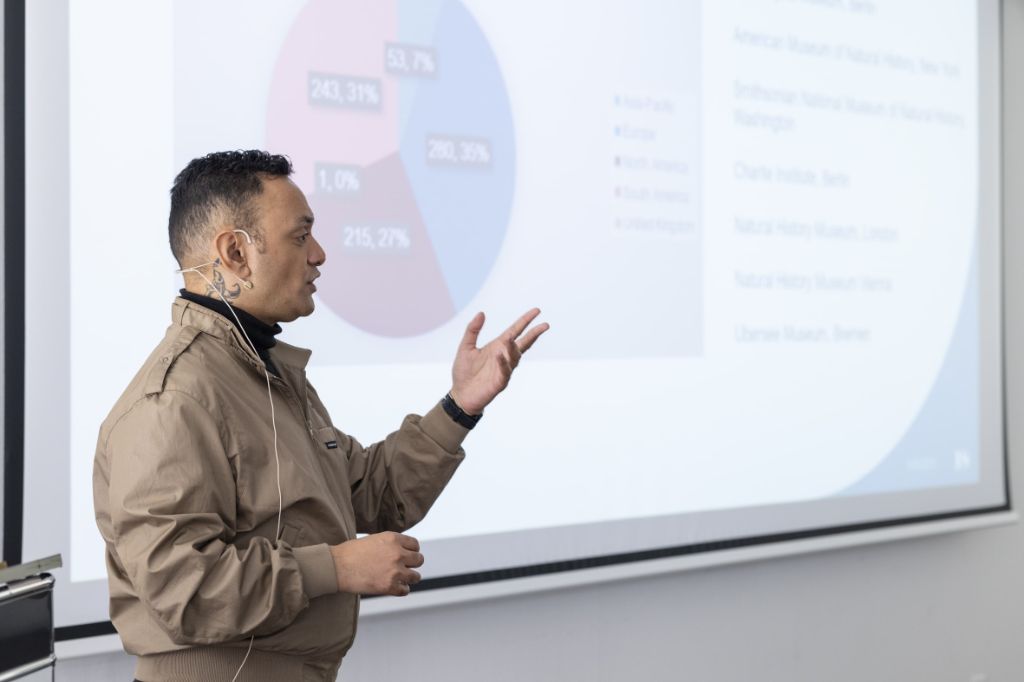Wie Ahnen zurückkehren
Te Arikirangi Mamaku-Ironside ist der Verantwortliche für Restitution des «Karanga Aotearoa Repatriation Programme» vom Te Papa, dem Nationalmuseum von Neuseeland. Im Rahmen dieses Programms werden menschliche Überreste heimgebracht. Er war letzte Woche in Basel.
MKB: Why are you here in the museum?
Te Arikirangi Mamaku-Ironside: I collect three plaster casts of a Toi moko, a mummified tattooed head, which was returned to New Zealand in the 1990ies. The museum has approached us to inquire whether we would also like to have the casts. We did not know that they existed.

Te Arikirangi Mamaku-Ironside schenkt Ozeanien-Kuratorin Beatrice Voirol seinen Schmuck aus Nephrit-Jade
The casts are not human remains. Why do you take them back?
They are connected to the Toi moko. They are a product of the ancestor, therefore they also deserve to be repatriated. We do not only bring human remains home but also other objects which are associated with our ancestors and their burial places. Institutions offer them to us and we appreciate this gesture.
We acknowlegde them as humans
Before taking the casts you hold a ceremony. Why?
This is our custom. In these ceremonies which are based on local customs we acknowledge them as humans, in the language of our ancestors. We hold short speeches, say prayers and sing songs. They wrap themselves around the ancestors who are thus wrapped in love.
The ancestors by the way have given their consent and accept other people attending the ceremonies. They say these people are part of their history.

Die traditionelle Begrüssung der Maori nach der Zeremonie: Te Arikirangi Mamaku-Ironside und MKB-Direktorin Anna Schmid
Do museums and other institutions part easily with human remains?
Ceremonies and presentations of our programme help making people aware of our culture. Older generations can regard our ancestors as objects not as human remains and can claim ownership. But younger curators have new values and views and part voluntarily. Nowadays the colonial past is critically reappraised, which helps.
A big part of our work is research
However, bringing human remains back can take years.
Yes, it can be decades even. Attitudes do not change quickly, and the bureaucracy in certain countries is well known. It also takes time to negotiate with the tribes in New Zealand. These are rather discussions and interventions than actual negotiations. There are conflicts between tribes and even in families. We offer a dialogue, stay calm and collected.

Die Dokumente des «transfer agreements» werden übergeben
Your programme has been running for 20 years. How many of your ancestors have you repatriated?
About 800. After being made aware of the ancestors or locating them we start the repatriation process. We do not pay for our ancestors but we pay for the transport home. We remove all obstacles. And a big part of our work is research. Museums for example often have information about the year the human remains came to them, about the collector and the donator or previous owner. We search archives and catalogues of museums, universities and other institutions. We look at inscriptions and labels on the ancestors which might reveal more information. It is very difficult to find out the provenance, be it geographically or individually. We need the help of the tribes. Also when defining where the ancestors will find their final resting place.
It is a very emotional time
Then there will be again a ceremony?
When the ancestors come back to New Zealand we organize a big ceremony called a ‘Pōwhiri’. The pōwhiri is a Māori cultural process for welcoming people to the ‘Marae’, or community gathering place. We welcome the ancestors, the community gathers, we weep together. The pōwhiri for these treasures and ancestors can be seen as a sort of funeral, and it is a very emotional time for our community.

Im Anschluss an die Zeremonie berichtete Te Arikirangi Mamaku-Ironside über das Programm und seine Arbeit